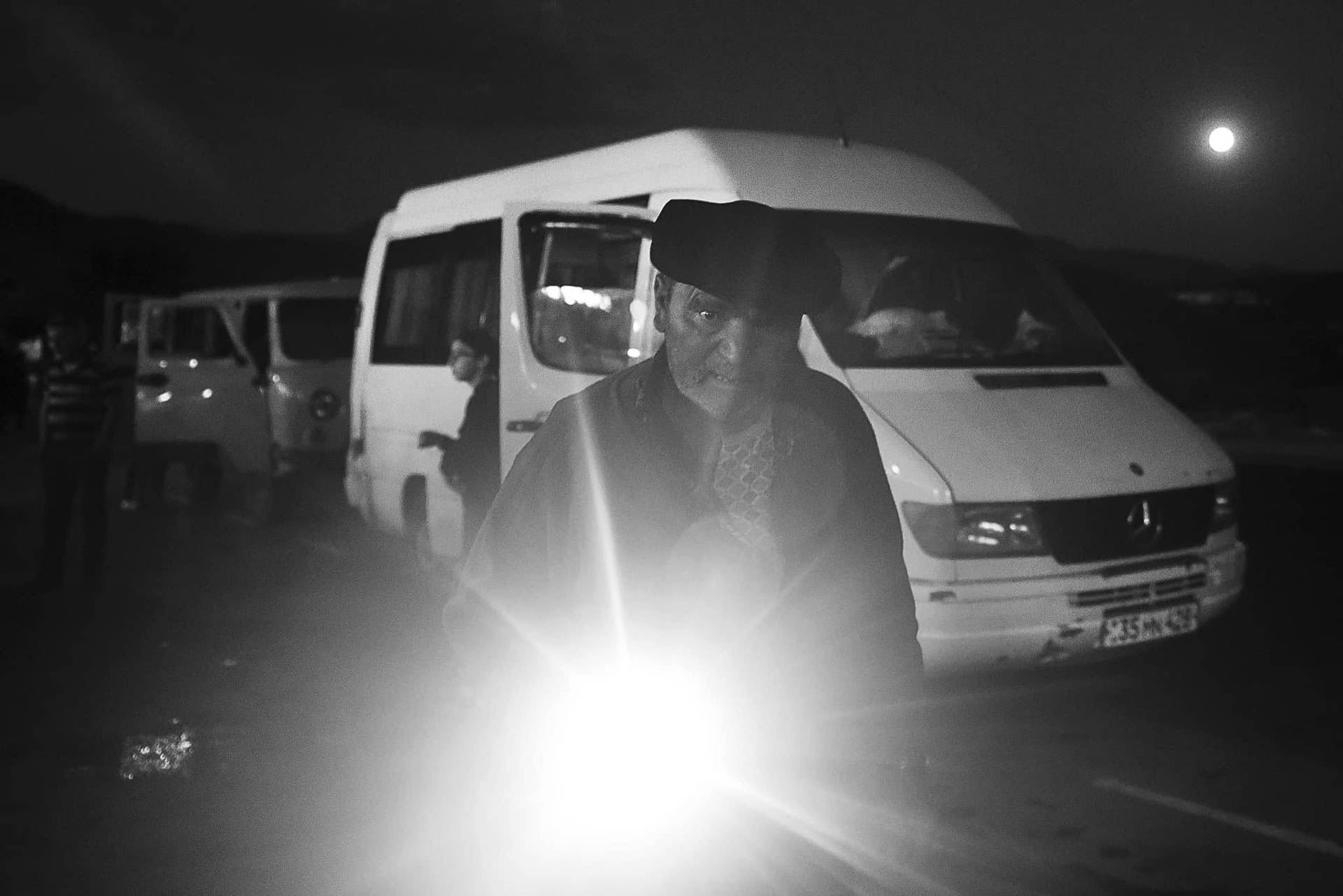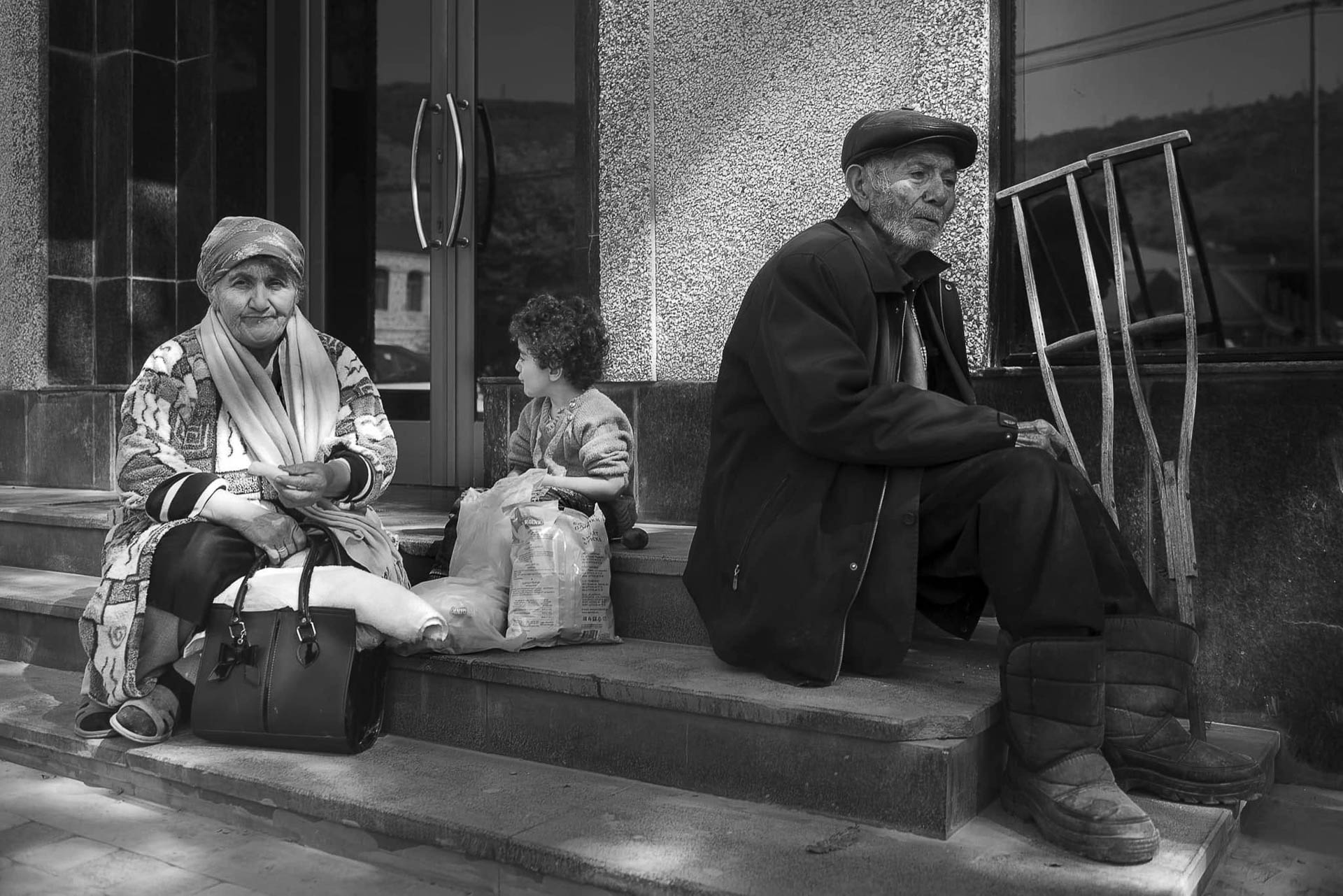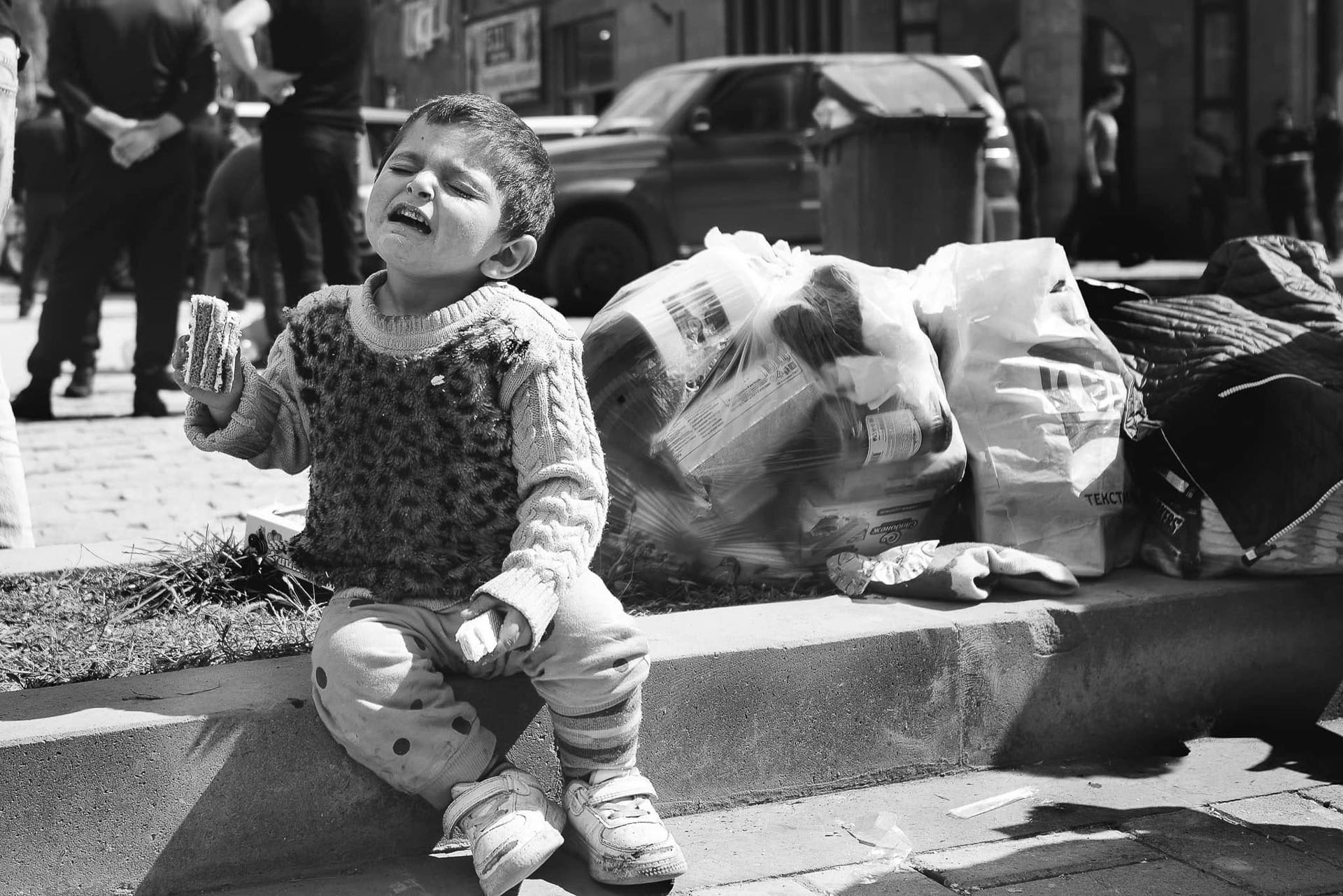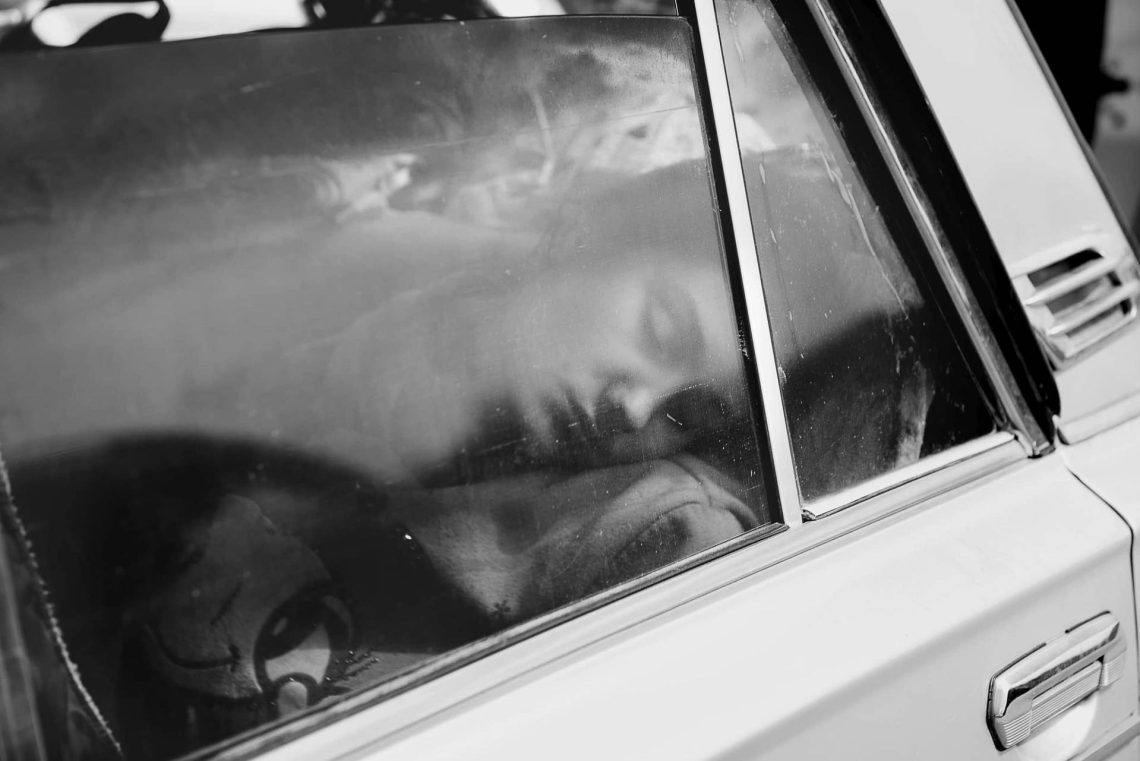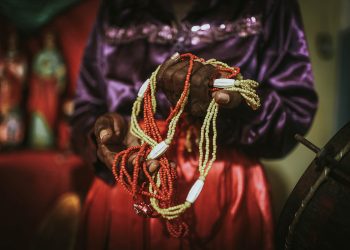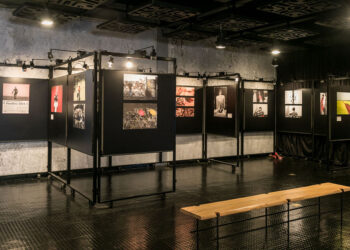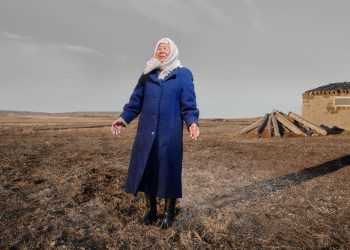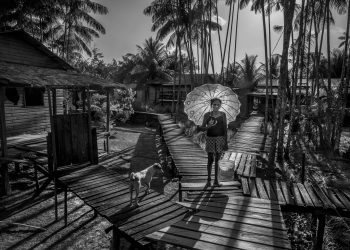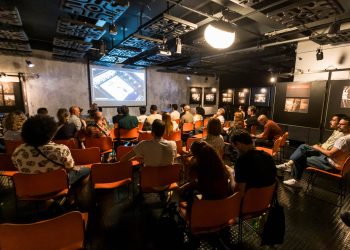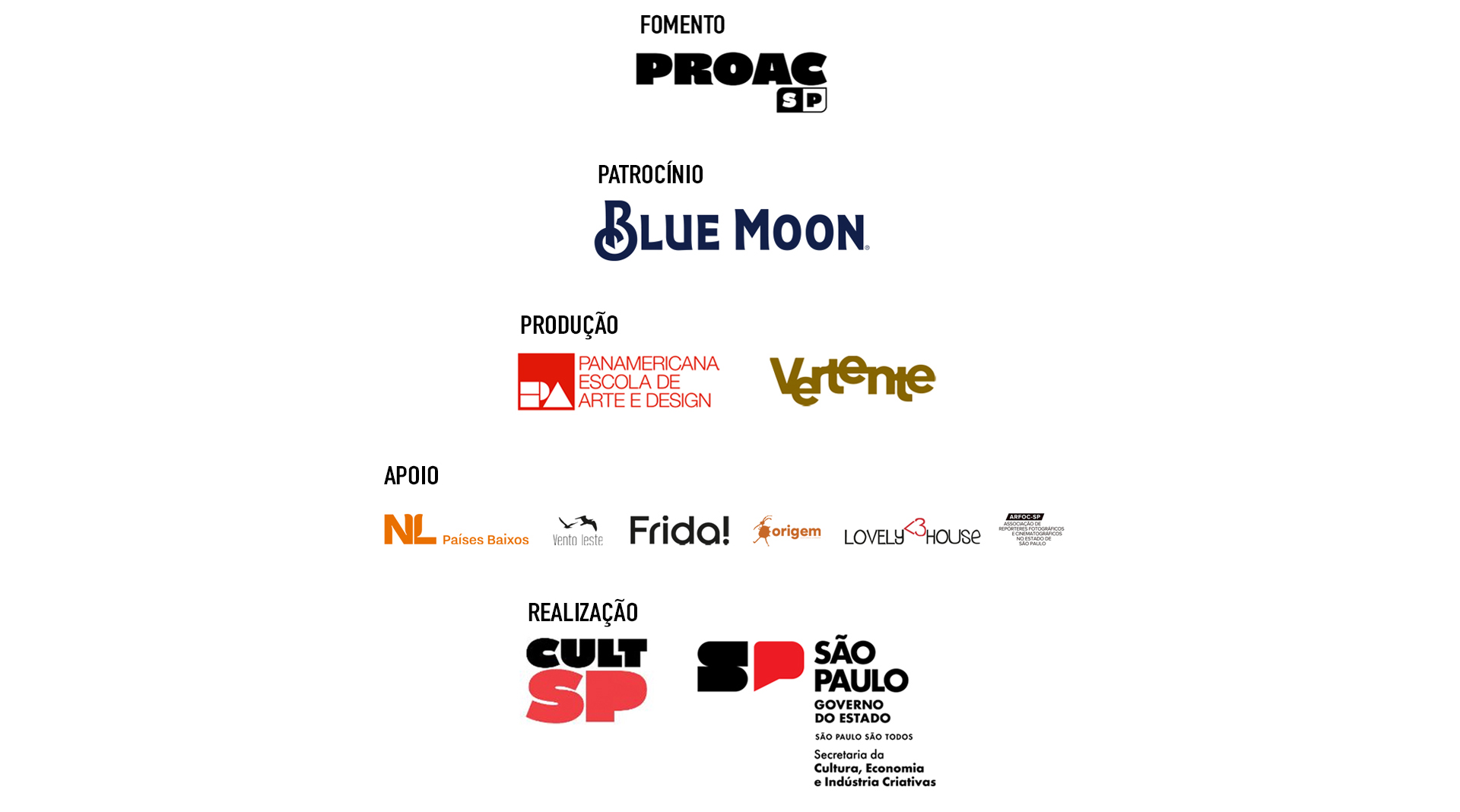Tell us about your finalist work for the FotoDoc Photo Contest 2025. When and where was it created? What is its concept? How does it fit into your photographic practice?
The work I presented in this contest touches me personally, since as I said in the previous answer, forced displacement (unfortunately increasingly common in the world) moves me immensely! This time I had to document my own people, the Armenians, being expelled from our ancestral lands in the face of the world’s indifference and silence. I did this two years ago when this tragedy happened, and I was coincidentally on a family trip in Armenia.
Obviously, my impulse was the urgency and need to document the events, so that a historical record remains and so that the truth cannot be distorted over time. I never thought that as a photographer and an Armenian, I would one day have to reproduce the same type of photos I grew up with, those of the 1915 Genocide. The photos I would never have wanted to take of situations that should not exist in the world.
It integrates linearly and conceptually into my work and photographic development, since I previously photographed centers and camps of Haitian, Central American, Syrian refugees in Greece, Mexico, and also ethnic groups like the Molokans, Mennonites, Amish…
What projects are you currently working on? What are your near-future plans for photographic production?
I am currently exhibiting “Like 2 Drops of Water” (Como 2 gotas de agua) at the Jorge Newbery Airport in Buenos Aires; it is a series of parallel images between Armenia and Argentina, a bridge to link the two countries that I feel as homelands in my binational character.
And I am developing a conceptual project “Under Surveillance” where I propose the dilemma of the paradox of maintaining ownership of our own individual identity in a hyper-surveilled world where every one of our movements is recorded in the public and private sphere with surveillance cameras, from our mobile devices that listen to us and know everything about us. Yet, as photographers, we sometimes encounter situations where people in public spaces refuse to be photographed. Can we appropriate a face that is in a public space…? I am considering setting up the exhibition with an audiovisual medium platform as if it were the projection of a security camera recording. I am in the midst of portfolio review and full development.




